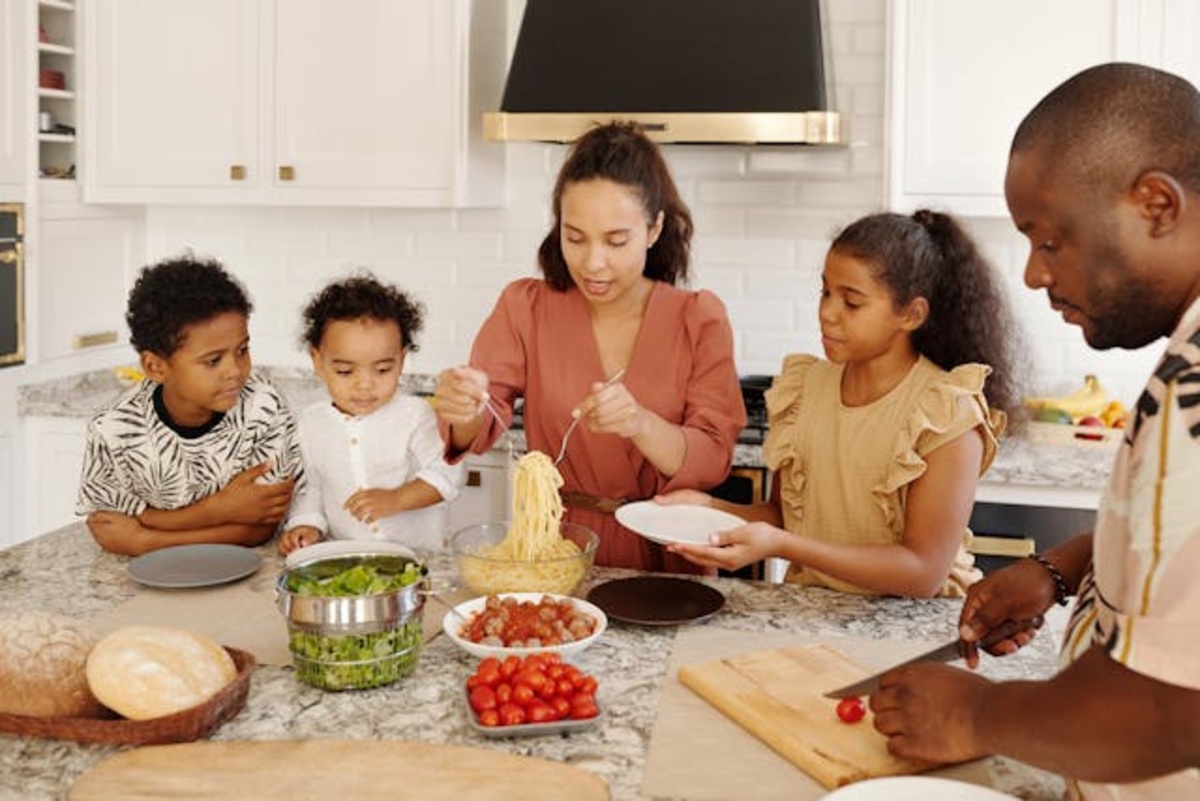Blog
Cooking with Kids During Allergy Season: Safe, Fun, and Mess-Free
Cooking with kids can be one of the best ways to spend time together. From messy little fingers shaping meatballs to giggles over flour clouds in the air, the kitchen is a place where memories are made. But when allergy season rolls around—or when food sensitivities flare up—mealtime fun can sometimes turn into sneezes, itchy eyes, or discomfort.
The good news? With a few smart strategies, you can keep the cooking time joyful while cutting down on allergy stress. Here’s how to make family cooking both safe and fun during allergy season.
Spotting Allergy Triggers in the Kitchen
Allergies don’t just show up outside. While pollen can drift indoors and trigger sneezes, food allergens can also sneak into cooking time. Kids might rub their eyes after handling flour, or start coughing when chopping strong-smelling vegetables during peak pollen days.
Signs to watch for include:
Sneezing, runny nose, or nasal congestion.
Red or itchy eyes during prep time.
Coughing or throat irritation.
Rashes or hives after handling certain foods.
If your child seems fine everywhere else but reacts during kitchen activities, allergies may be the cause. Talking with your healthcare provider is the best way to confirm what’s behind the symptoms.
Kid-Friendly Allergy-Safe Cooking Habits That Work

Photo by Vanessa Loring Making small shifts in your cooking routine can keep sneezes at bay and help kids focus on the fun of cooking. Try these practical adjustments:
Wash up often. Have kids wash their hands before, during, and after cooking to remove pollen or food allergens.
Keep prep areas clear. Wipe counters with a damp cloth to trap allergens instead of brushing them into the air.
Choose ingredients wisely. If you know your child has sensitivities, swap common triggers (like wheat or nuts) for allergy-friendly alternatives. Oat flour, rice noodles, or sunflower seed butter can work beautifully.
Shut the windows on high pollen days. Fresh air feels nice, but it often carries pollen inside right when you’re prepping dinner.
Use washable aprons and towels. Toss them in hot water after each cooking session to keep allergens from building up.
These simple steps not only help prevent flare-ups but also create smoother, stress-free cooking routines.
Fun Allergy-Friendly Recipes Kids Can Help Make
Cooking with kids is all about making it enjoyable. Allergy-friendly recipes don’t have to feel restrictive; you can still whip up colorful, tasty dishes that let kids be hands-on. Here are a few ideas and ways kids can join in:
Fruit kabobs: Let kids wash the fruit and stack grapes, melon cubes, or strawberries onto skewers.
Oatmeal energy bites: Have them measure oats, stir in honey and sunflower seed butter, and roll into balls.
Veggie pizzas on rice cakes: Kids can spread tomato sauce, sprinkle chopped veggies, and top with cheese before baking.
Homemade popsicles: Blend fruit with a splash of yogurt or juice, and let kids pour the mixture into molds.
These recipes are easy, mess-friendly, and adaptable to fit your child’s needs. The goal is to keep the kitchen fun and inclusive while avoiding unnecessary triggers.
How to Keep Kids Involved Without Triggering Allergies
For some children, direct handling of certain foods may be too much. But that doesn’t mean they have to miss out on kitchen time. Give them tasks that limit close contact but still make them feel like chefs:
Measuring dry ingredients into bowls.
Stirring batter or sauces with long spoons.
Setting the table or arranging napkins.
Pushing buttons on the blender or timer.
When kids feel included, they’re more excited about eating the meals they helped make—and less likely to fuss about allergy-friendly substitutions.
When to Look Beyond Quick Fixes for Allergies
Daily habits and recipe tweaks make a big difference, but if allergies keep showing up no matter what—whether from pollen in the air or ingredients in your meals—it may be time to explore longer-term solutions.
One option to ask your healthcare provider about is sublingual immunotherapy (SLIT) for food allergies (also available for common allergens like pollen). Unlike antihistamines, which only mask symptoms temporarily, SLIT works to retrain your immune system. And unlike traditional allergy shots that require clinic visits, SLIT is taken at home in the form of drops or tablets under the tongue.
According to the American College of Allergy, Asthma & Immunology, immunotherapy can reduce symptoms for years after treatment. It does take commitment—usually three to five years—but for many families, it’s worth it to enjoy cooking, playing, and eating together without constant interruptions from sneezes and sniffles.
Bringing Joy Back to Allergy-Season Cooking
Cooking with kids doesn’t have to stop when allergy season arrives. With a little planning, the right habits, and kid-friendly recipes, your kitchen can stay a place of fun instead of frustration.
Keep the aprons handy, the tissues close by, and the laughter flowing. Allergy season doesn’t have to mean pulling back from the kitchen. It’s just another chance to get creative, stay connected, and make memories you’ll all cherish, sneezes and all.





Comments